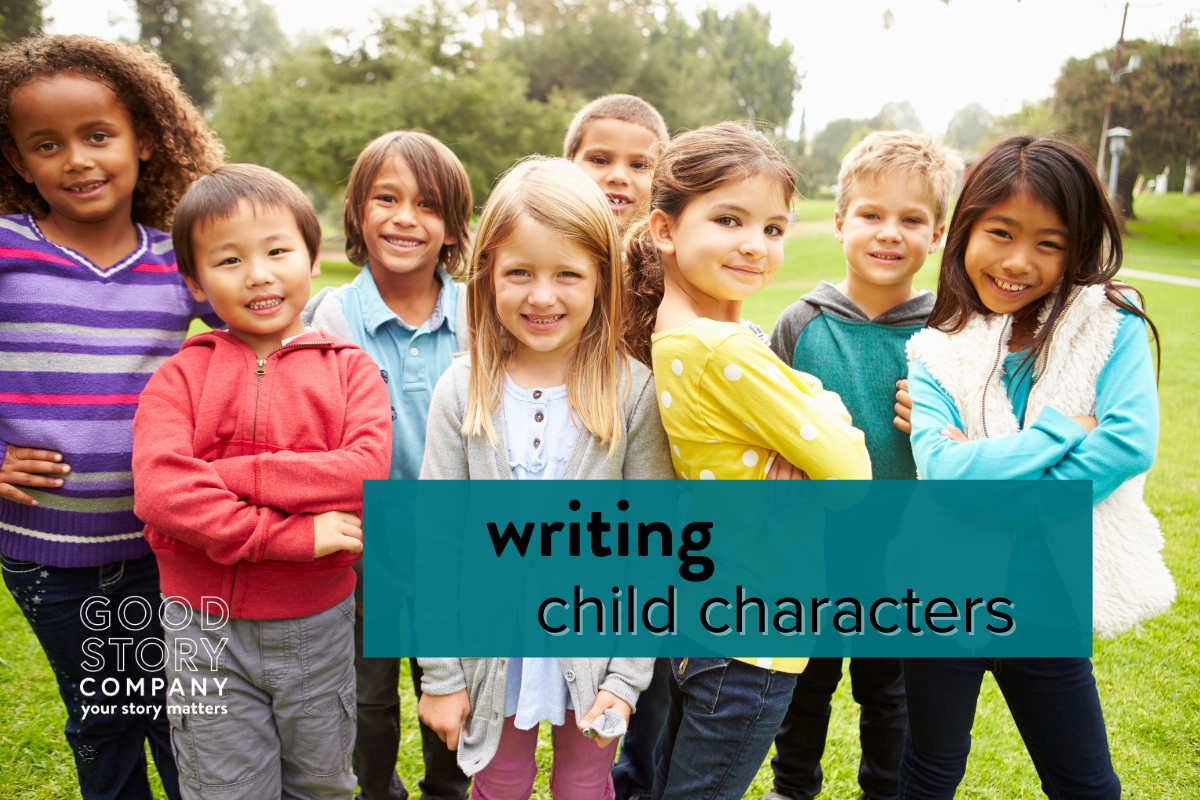Tips for Writing Child Characters
Young readers can be notoriously quick to put down a book if they don’t connect with the protagonist. If you write for kids, it’s important to be able to write believable characters that portray their age correctly. But don’t rely on clichés or stereotypes. Your child characters have to feel like real people. Whether you’re writing a picture book, a chapter book, or a middle grade novel, the star of your story is a child character. Here are some tips on how to write a believable one.
Make your story stronger with believable child characters.
Want even more Good Story Company content? Become a member! Get access to tips, workshops, handouts, resources and videos for writers of all levels—all for less than your Netflix subscription.
Child-sized Character Development
If you haven’t already heard of, or worked with, a character development sheet, now is the time. It’s basically a laundry list of questions for you to answer about your character. And, yes, every character in your story—from kids to teenagers to adults—should have their own sheet. You might think it’s over the top for a child character, but all characters have a backstory. And even though children haven’t been around the block a few times, they still have a few key events that have impacted who they are in your story, and who they will be in the future.
Spend some time on the character sheets, and really delve into their personalities, quirks, and vulnerabilities. Not everything on your questionnaire will (or should) make it in your story verbatim, but by knowing your child protagonist from the inside out, you will be able to nail their age-appropriate tone and voice.
Child-sized Goals and Motivation
All characters have goals and motivations. This shapes your character’s arc through the story. While adult characters might have bigger goals like falling in love in a romance, or saving the world in a fantasy, your child character will have goals too!
Spend some time thinking about when you were your character’s age, and ask yourself what you wanted back then. Was it something simple, like an ice pop from the Good Humor truck on a hot summer day? Or was it deeper, like standing up to the neighborhood bully?
Having a child character gives you plenty of room to show growth in their character. Flesh out the journey they will take over the story. This is the heart of why you are writing your story about a child, to explore the universal themes of growing up: the good and the poignant.
Child-sized Dialogue
Children usually don’t have many filters when they talk, so their dialogue can be more straight-forward. Overall, sentences can be shorter. But don’t make them sound “cutesy” or use “baby talk,” as that will be insulting to your reader.
Be careful when using big words that their age-group might not use, and never deliberately misspell a word to show they are a kid. Remember, you just spent time on character development, don’t resort to cliché speech. You will annoy your young reader and your book will be tossed aside.
If you follow these tips, you’ll be able to write fully developed child characters that your reader can identify with and root for.
Happy writing!
When you join Good Story Learning, you get access to every educational resource we’ve ever produced—plus the materials we’ll make in the future—all at your fingertips, whenever you need it. Workshops. Handouts. Resources. Videos. Insights. Everything you need to get you through every phase of the writing process, from brainstorming to pitching to marketing. It’s all right here, for just $9 a month.

